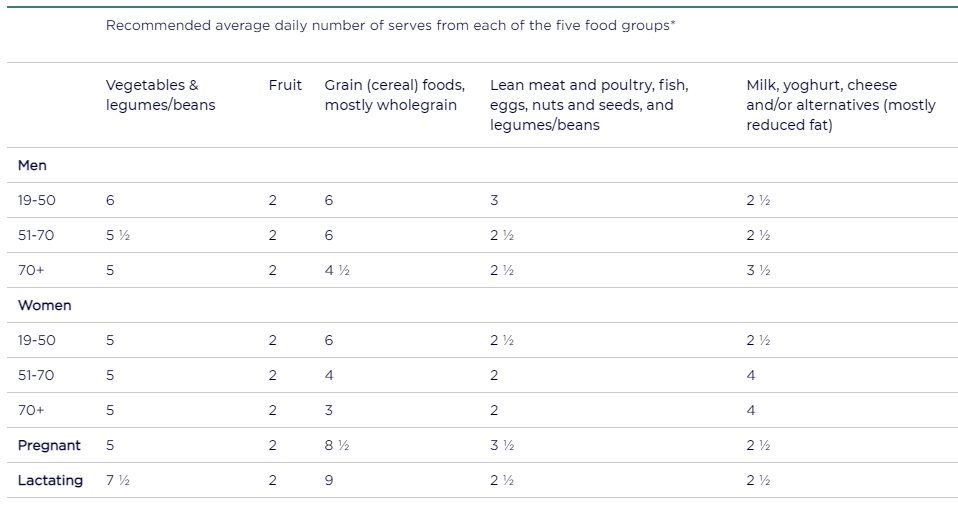
The Australian Dietary Guidelines are a framework that provides advice on healthy eating for the general population (1). We have summarised the five guidelines below and considered how they relate to people following a FODMAP diet to manage their IBS.
Staying adequately (but not excessively) hydrated can help with managing constipation in IBS and optimising body function in general. The Australian nutrient reference values suggest an adequate fluid intake of 2.1L (for women) and 2.6L (for men) per day from fluids such as water, milk and other beverages.
Physical activity is not only great for our body and minds, but light to moderate exercise may also improve constipation in IBS.
In Australia, individuals are advised to be active on most, if not all days of the week, and to accumulate 150 to 300 minutes (2 ½ to 5 hours) of moderate intensity physical activity (such as brisk walking, recreational swimming and social tennis), or 75 to 150 minutes (1 ¼ to 2 ½ hours) of vigorous intensity physical activity (such as aerobics, jogging, many competitive sports), or an equivalent combination of both moderate and vigorous activities, each week.
The Australian Dietary Guidelines list out recommended number of serves to provide the nutrients and energy needed by adults. For those who are taller, more active or in the upper range of an age group, additional serves from the five food groups may be needed.

We have also included low FODMAP options to take some of the guesswork out when you design your FODMAP diet.

Some other handy tips:
Discretionary foods are foods that do not fit into the five food groups and are high in energy, saturated fats, sugar, salt or alcohol, but low in essential nutrients. Consuming too many discretionary foods increases your risk of developing chronic diseases, such as overweight and obesity and type 2 diabetes. Whilst discretionary foods can be enjoyed occasionally and in small amounts as part of a balanced diet, try to limit your intake when possible. Check out our blog and recipes for some low FODMAP healthy snacks ideas!
While we have tested found many alcoholic drinks to be low FODMAP, they should be enjoyed in moderation. The Australian Department of Health advises healthy adults should drink no more than 10 standard drinks per week and no more than 4 standard drinks on any one day (2).
Breastfeeding provides essential and adaptive nutrients to the growing baby, and is also beneficial for the lactating mother as well. Check out our blog post on how to achieve adequate nutrition for breastfeeding mums who are following a low FODMAP diet.
Check out our blogs for tips on cooking, meal prepping, and following a low FODMAP diet on a budget.
DoFoodSafely (developed by the Department of Health Victoria) provides a free, online learning program that helps you learn about food safety in an interactive and fun way (you get a cool certificate upon successful completion too!).
If you would like personalised dietary advice, visit a dietitian for a thorough nutrition assessment and management for your nutritional needs. Our Dietitians Directory is a great index for you to find a local dietitian who is Monash FODMAP trained. From Australia to America, our directory includes the contact details of over 1,100 dietitians in over 49 different countries.
References: